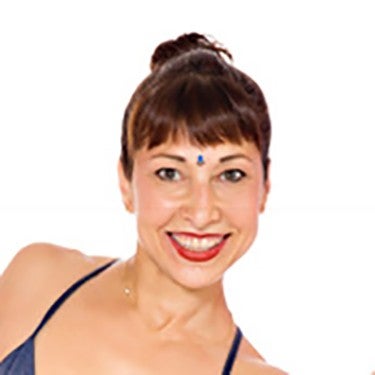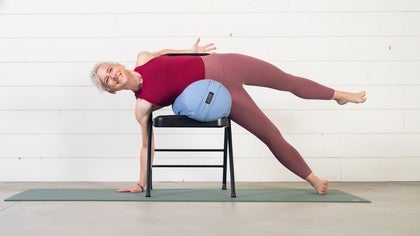
Yoga Sequencing for Safety, Sustainability, and Sanity
You followed the cues from your teacher carefully and with full attention, sure, but didn’t think you were flexible enough in your shoulders to try that unusual Camel Pose variation. And yet - wow! Who knew? And didn’t you try something like that a couple of months ago and it was a no way, no how, not-happening-in-this-lifetime proposition? So why now? Hmm, well, your yoga space is warm and the teacher is encouraging and you got enough sleep last night. But still...as your hand presses into your heel and your chest lifts even higher, somewhere in the back of your head is the little voice saying, “This will never happen again, it’s a unicorn moment, don’t count on it!”
You’re wrong. And you’re right. This could happen again. And no, we shouldn’t count on it.
Let me explain.
We know there are so many factors that go into how our bodies will respond to the demands of asana practice on any given day. Yes, getting proper sleep and nutrition helps to ensure our bodies are functioning well. Yes, it’s a blessing when we have a clean quiet space that is warm enough to contribute to the flexibility of our muscles and the focus of our full attention. Props can certainly help, and the skill of a teacher’s cuing is absolutely a factor. But there is also something hidden in the yoga class equation. Something that happens not in the moment, but in the hundreds (or thousands) of hours before, depending on how long your teacher has been teaching, and their understanding of body mechanics and anatomy.
What is yoga sequencing?
Sequencing. What is it, what makes it “good”, and how can it contribute to those I-could-never-and-now-I-can moments?
Let’s go back a little bit. The phrase Vinyasa Krama means “wise progression” or “to place in an intelligent way”, and refers to the order of asana in a yoga class. If a sequence has been well planned, our bodies respond to more advanced demands, and our minds are comfortable with the slowly increasing challenges. If a sequence has not been well planned, it’s exactly the opposite. At the very least, we are unable to do poses that have felt doable in the past, or we try to “keep up”, and find ourselves unnecessarily frustrated or, worst case scenario - eek! - injured.
Picture this: could you imagine if you started a class and the teacher said, “Namaste, welcome to class, let’s begin with Urdva Dhanurasana (Wheel pose)”. Whaaa? You would most likely change the video or at the very least skip that part of class, as your body and mind are not prepared for such an advanced asana so soon into practice.
However, if the sequence has been properly planned, class might begin with some breath cues to get ujjayi pranayama going for optimal respiration and focus, then a few asana to open the hip flexors, perhaps Crescent Lunge, Warrior 1, and Dancer’s Pose. There would be some asana to open the chest and shoulders, like Devotional Warrior or perhaps Gomukhasana arms or a bind or two. Strengthening the legs can happen with Utkatasana, and the arms with Chaturanga. Add in some Peaceful Warriors and Extended Triangle pose for some space in the intercostal muscles along the rib cage, a Camel or Bow pose to start to bring it all together and then voila! It’s time for Wheel, unicorn moment is here, and up you go!
Lessons from yoga sequencing
One of my favorite aspects of Yoga is how so much of what we do on the mat translates into our lives off the mat. Think of all the Practice is teaching us through Vinyasa Krama. Here’s my top three lessons, feel free to comment with yours!
- Be patient
- Build to a peak pose
- Don’t get attached
Take one step at a time. If we rush into the big moments, we take the chance of missing all the good stuff along the way: building strength, increasing flexibility, training our minds to stay connected to the present moment.
When a pose feels overwhelming, break it down into components.
Want to start working on that Side Plank variation with the top leg in Tree Pose? Cool. What do you need to get there? Strong arms and core. Okay, add a couple more Planks and Chaturangas to your practice, perhaps an extra Vinyasa or two. Your legs will need to be strong as well, and your hips should be warmed up. What if you added a few more breaths in Utkatasana and your Malasana squat next time they are cued in class? Put it all together and that variation doesn’t seem so intimidating.
We can do the same thing with our lives: say we have to plan a family reunion or a big project for work. Start with a guest list, start with an outline. Think of it like working on a thousand-piece puzzle. Find the corners first.
Sometimes, even when all the factors are in place, and you’ve given it three, four, or twelve tries, your body still says, “Nope. Not today.” And we have to surrender to that. There is a fine line between being diligent and being stubborn. One teaches us good work habits. The other teaches us to ignore signals that the body or mind might be sending us. Never a good idea! Effort is quite different than strain. Our “goal” with Yoga is not any particular asana, as fun or rewarding as they might feel. It’s Union with our inner Teacher. The Voice that comes through when we are truly listening.
Using Vinyasa Krama ensures us of a sustainable practice, one that can be great refuge for many years ahead. I know I want that, and my guess is you do too, as you have found your way to Yoga Anytime. Have a happy (safe!) Practice, and I will meet you on the mat!
Namaste, Ali.
Comments
No comments yet. Be the first!









You need to be a subscriber to post a comment.
Please Log In or Create an Account to start your free trial.